Review of CIBSE Guide D: 2020
Adam Scott, BEng (Hons), CEng, FCIBSE, MIMechE
Operations Director, Sweco, UK Limited
Purpose of Guide D
The purpose of the CIBSE Guide D is to provide guidance to practitioners involved in transportation systems in buildings. The Guide will be of interest to architects and developers, along with facilities and building managers who may not be directly concerned with the design and installation of lifts and escalators but need to understand the advice offered to them by specialists. Not least, the Guide should also be of value to students embarking on a career in mechanical, electrical or building services engineering and those already practising in these disciplines who wish to enhance their knowledge through a programme of continuing professional development.
Recent developments
This edition of the Guide has been reformatted into a left justified single column page layout which has significantly increased the number of pages. Some examples, theory and informative material have been moved to appendices to improve readability.
The machine-room-less (MRL) lift continues to broaden its range of application and offers more and more opportunity to provide effective appropriate lifting capability in a space efficient manner. Care does, however, need to be taken to ensure that MRL equipment is fit for its intended purpose. These include: high traffic demands from people, frequent and sustained use for the movement of heavy goods, the application of scenic cars and the use of dense car fit out materials.
The last few years have seen another major step in lift technology with equipment powered by linear magnet drives, freeing the lift car to move both horizontally and vertically. This prototype system has no suspension means and allows several lift cars to operate in the same well, with cars moving horizontally and vertically on a circular principle first seen in paternoster lifts. This move away from conventional roped systems has considerable potential for transforming space efficiencies in very large buildings. It should be of great interest to the industry to see whether the transition from prototype to product is achievable and successful, and then indeed what the response from other manufacturers might be. The use of ropeless magnetic levitation lifts was predicted by Dr Gina Barney as far back as 1985 (Barney and dos Santos, 1985) and it appears that this idea may now at last be coming to fruition.
Destination control technology (‘hall call allocation’) has now firmly established itself in the marketplace as the control system of choice in commercial workplaces where its benefits are typically of most value. The selection of hybrid destination control systems appears to remain rare, perhaps due to the potentially confusing interfaces it creates for the users. Destination control is also increasingly being valued for the contribution it can make to personalised service and enhanced security.
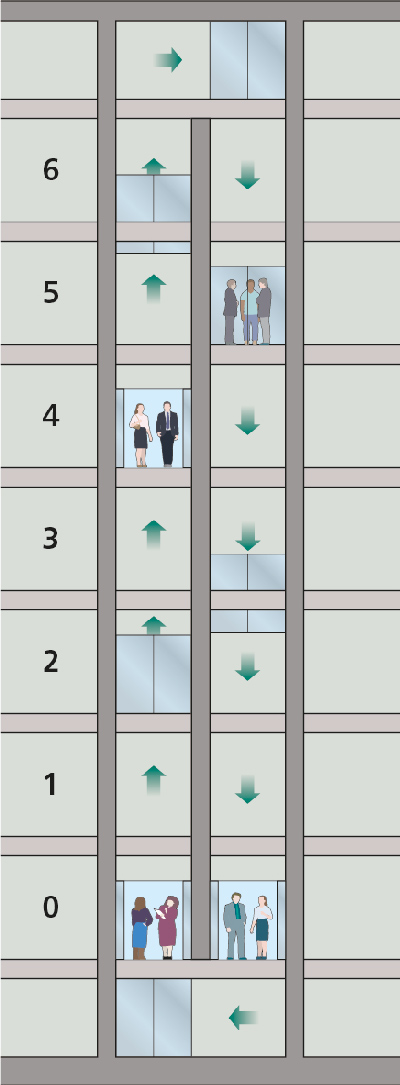
Figure 1.1 – Two wells, many lifts
Awareness of the need to provide a truly accessible environment for our ageing population has continued to improve. A lift’s contribution to a step free environment is of course significant and should be an early focus of any building’s design development. The line between office and home is blurring, and the design of buildings is responding with many more mixed-use environments, which in turn create complex demands on lifts from many different user groups, all of which need careful consideration early in the design process.
Health and wellbeing are also becoming more important in our daily lives, and the role that lifts can play in encouraging us to be less sedentary should be highlighted. “SMART” buildings are emerging within which key systems “talk” and refine their behaviour and performance to suit the users’ needs. Maybe lifts are in danger of becoming too much of a convenience for us and should be encouraging us to use the stairs and keep fit rather than taking the lazy option of a car ride down one floor.
The sustainability of our planet also seems at last to be coming into sharp focus in most people’s minds. Our consumption of dwindling resources appears to be hard to stem and the mantra of “every little bit helps” should apply in vertical transportation design as in other areas. Perhaps our lift systems should be designed to operate with a “minimised energy consumption” algorithm rather than delivering the convenience of such relatively short waiting times.
The adoption of the BS EN 81-20 and BS EN 81-50 standards is now well established. A substantial number of other standards and documents have now also been updated to align with the new “Parts 20 and 50”. The concept of a truly global set of lift safety standards appears to be deliverable as evidenced by progress with the ISO 8100 family of standards which ultimately will replace the familiar EN 81 documents. In December 2020 the amendments to this family may be complete, and ISO would then take the lead and provide regular revisions every three years, commencing in 2023. EN 81-20/50 would then eventually be withdrawn. Lift practitioners and suppliers working outside the CEN ambit will then be working to a common set of standards.
Contents of Guide D
The design of any lift or escalator system must commence with a consideration of the traffic flows through the building for which the system is intended. The relevant factors, along with guidance on the location and arrangement of lifts, escalators and moving walks within buildings, are discussed in chapter 2, which considers a range of building types along with some additional guidance principles for disabled circulation. This chapter has undergone significant revision and now provides more useful guidance in this important area, including the new principle of Body Area Index (BAI).
Chapters 3 and 4 are now titled “Lift traffic design using calculation” and “Lift traffic design using simulation” respectively link closely together. The recommended design parameters have been updated to align more closely with those proposed by the British Council for Offices (BCO). These chapters now also include an important new section covering lifts intended for use by cyclists.
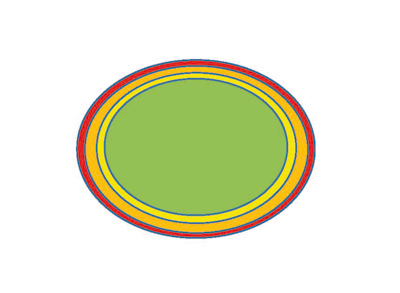
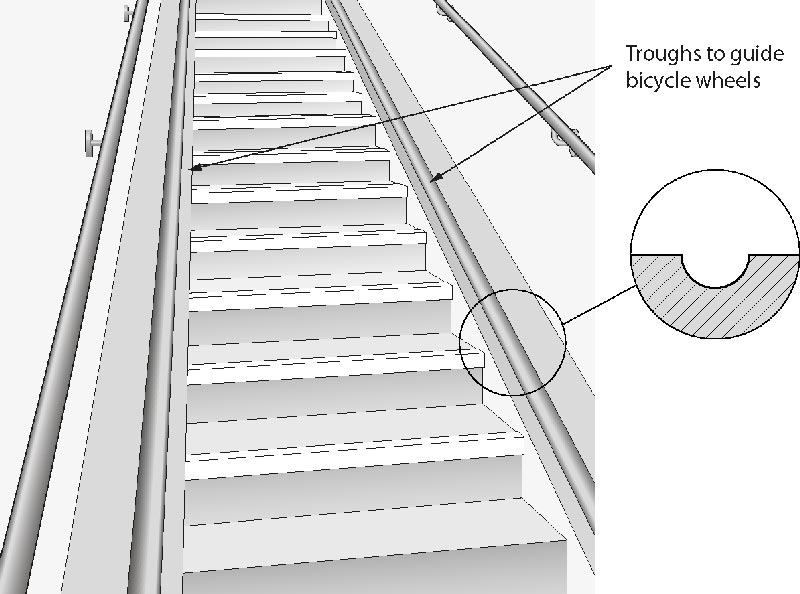
Chapter 2, figure A2.2 Adult person occupancy ellipses
Chapter 5, figure 5.16 ‘Dutch stair’
Chapter 5 links with the twelve building types considered in chapters 2 and 3. It remains a pivotal chapter as it gives a thorough review of various types of vertical transportation systems and is now updated with new products and applications, including bike lifts and rigid chain technology. It should be the first port of call for new entrants into the industry as not only does it describe in detail the various types of lifting systems it also provides advice on planning and design principles. The chapter examines in detail the standard traction drive and hydraulic drive lifts, including machine-room-less lifts. The appendix provides guidance on structural well sizing and indicates common car platform areas on which passengers stand.
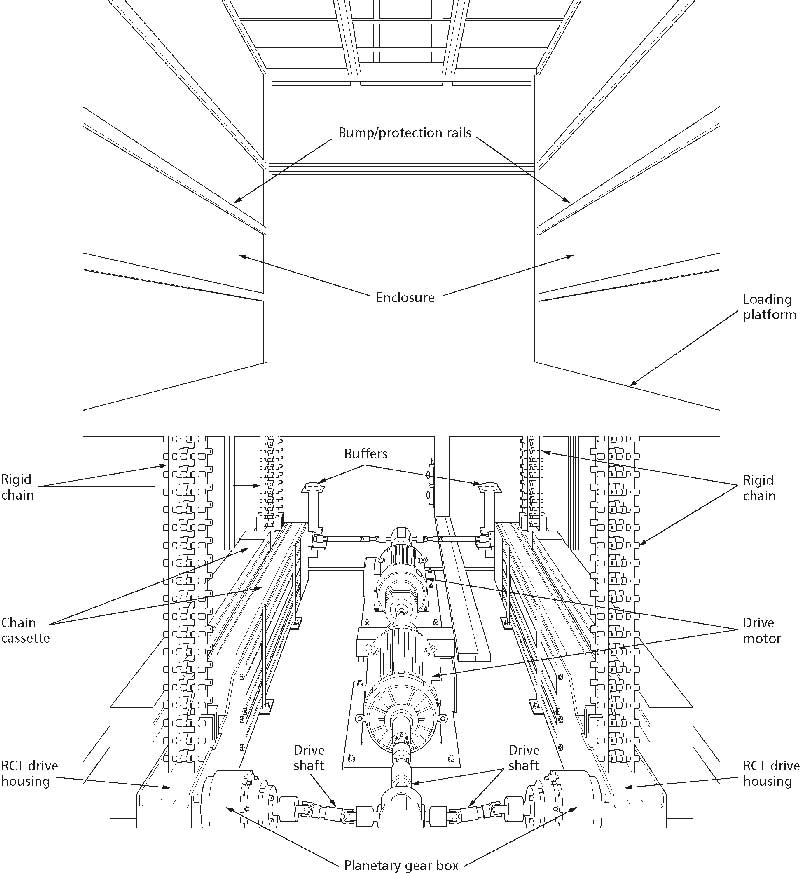
Chapter 5, figure 5.12 Rigid chain technology (RCT) lift
Chapter 6 covers firefighters lifts and evacuation lifts and has been completely rewritten to cover the extensive changes in codes and standards since the last issue of the Guide. The chapter now includes additional information on building requirements, essential firefighters lift requirements, modernisation of lifts for fire service use, modernisation of lifts for evacuation, use of non-evacuation lifts for the evacuation of disabled people, and emergency shuttle lifts (lifeboats).
The principal components of lifts, including the main elements of both electric traction and hydraulic drives, are described in chapter 7. This chapter has undergone a major revision and now includes guidance on remote alarms (previously in chapter 14) and a new section on hearing loops. The section on car and landing fixtures and inspection controls has been extended, and new illustrations provided.
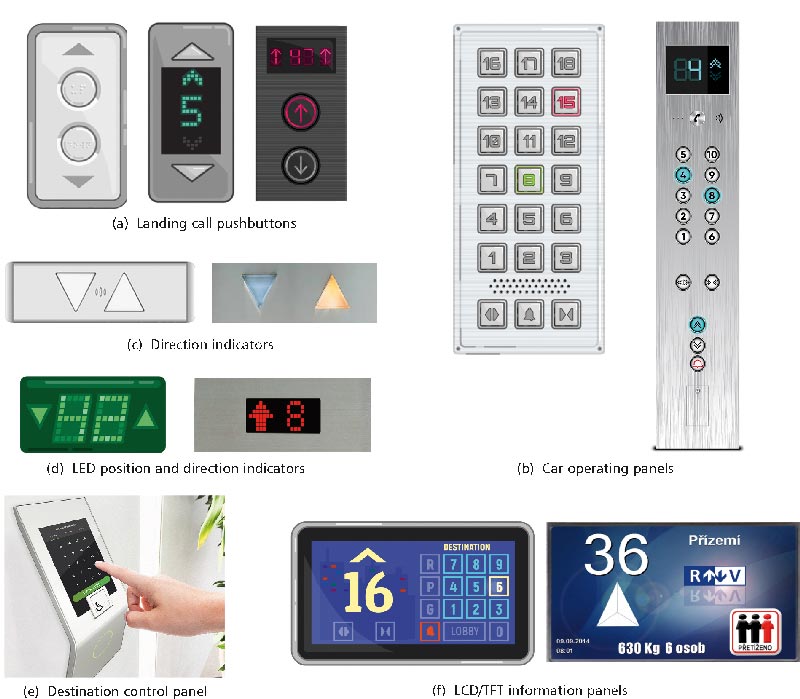
Chapter 7, figure 7.47 Examples of passenger controls and signals
Lift drive and control techniques are considered in chapter 8 and has undergone a minor update. Lift traffic control is outlined in chapter 9 and now includes a revised presentation of classical and Hall Call Allocation (HCA) control. The case studies have also been consolidated, and some legacy material removed.
Chapter 10 discusses escalators and moving walks, including safety considerations particularly in the context of the latest BS EN115-1:2017. The chapter details the different escalator applications which range from low-rise installations to accommodate a small change in level within a story of a building, through to long travel installations in deep underground stations. Inclined walkways and horizontal moving walkways are also considered. The chapter also includes a number of very useful design tips.
Transportation systems in buildings should provide independent and equal access for everyone. Chapter 11 has been updated to include appropriate reference to recently published standards, particularly BS EN81-70: 2018. The chapter provides guidance on the types of disability and design issues that need to be considered along with the standards and regulations that are applicable. There are also illustrations of the most common types of lifting platforms in use today.
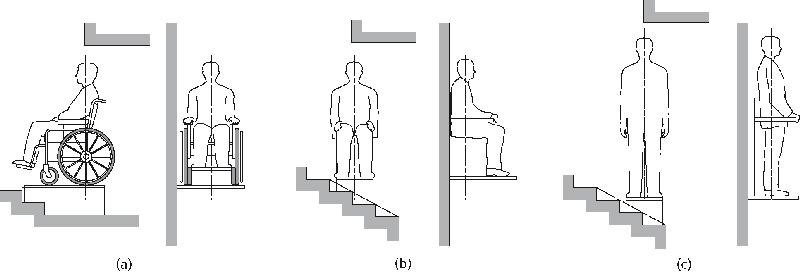
Chapter 11, figure 11.8 Types of stairlift
Electrical systems and environmental conditions are discussed in chapter 12 which has been updated to align with current practice. This chapter particularly examines the provision of power supplies for the whole building and guidance on key environment conditions, which should be considered during the design process.
Lift, escalator and moving walk energy efficiency and power consumption issues are discussed in chapter 13, which addresses how energy consumption can be minimised through good design, selection and control of the transportation equipment. The latest ISO classification system is referenced along with guidance on the current requirements of the BREEAM building classification system.
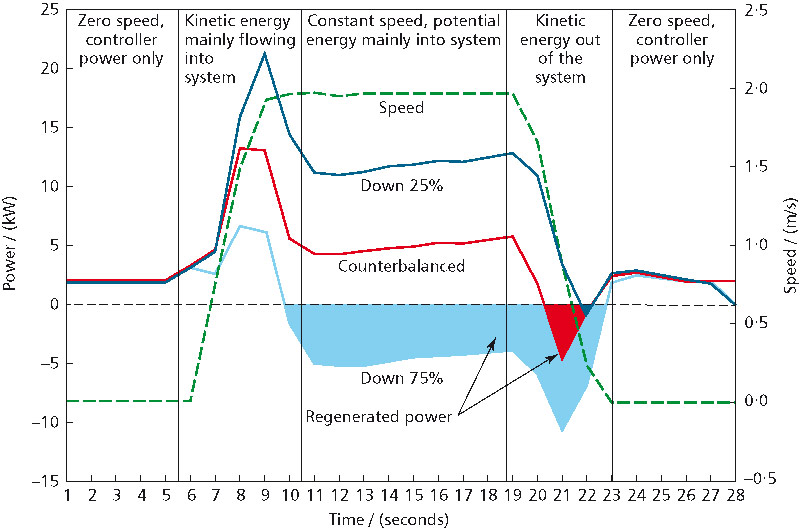
Chapter 13, figure 13.2 Speed and energy consuption of a lift
The scope of chapter 14 has been refined considerably from previous editions of the Guide. Guidance on remote alarms has been moved to chapter 7, and the principles of surveys moved here from chapter 4. There is now much new content covering the rapid progress of technology in the fields of communications, Internet of Things (IoT), cyber security, data logging, and Voice Over Internet Protocol (VOIP).
The proper commissioning, thorough examination, inspection and preventive maintenance of lifts, escalators, moving walks, lifting platforms and stairlifts is critical to ensure that the safety and capital value of these assets are maintained. These important issues are dealt with in chapter 15 which has been extensively revised and structured around new headings and sections. It incorporates the requirements of SAFed LG1 2020.
Chapter 16 deals with the important subject of the upgrading of safety, performance and equipment of existing lifts. It examines the reasons for upgrading, which can range from improving the reliability of the lift, its aesthetic appearance or obsolescence of key components. The performance can be in terms of the system’s traffic handling, ride quality or energy consumption to improving the safety of the equipment. This chapter has been updated to align with current thinking and standards. References have been updated, and the format of the tables improved.
It is fortunate that safety rules for the construction and installation of lifts and escalators, specifications, codes of practice, commissioning recommendations and safe working are all covered by an extensive range of British, European and international standards and codes.
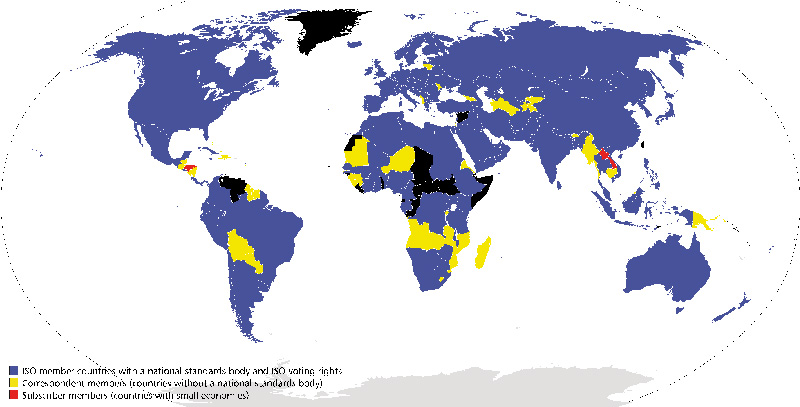
Chapter 18, figure 18.3 Global coverage of ISO
Chapters 17 and 18 provide an overview of some of these important documents. These chapters are supported by a comprehensive and up-to-date (at the time of publication) list of legislation, standards, codes of practice etc. now in Appendix A1.
Appendix A3 provides an extensive glossary of terms. This is not limited to the terms used within this Guide but also includes definitions of many of the terms likely to be encountered when dealing with lift, escalator and moving walk systems.
Finally, a comprehensive index is provided.
Other sources of information
It is hoped that this sixth edition of CIBSE Guide D: Transportation systems in buildings will continue to provide readers with an invaluable reference source for those involved in the design, installation, commissioning, operation and maintenance of transportation systems in buildings. However, it cannot be, and does not claim to be, exhaustive. The various chapters contain extensive references to other sources of information, particularly British Standards and associated standards and codes of practice (see Appendix A1), which should always be carefully consulted in conjunction with this Guide, together with relevant trade and professional publications.
